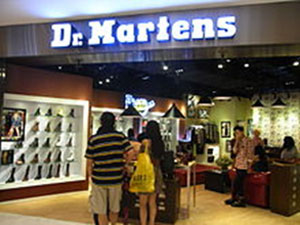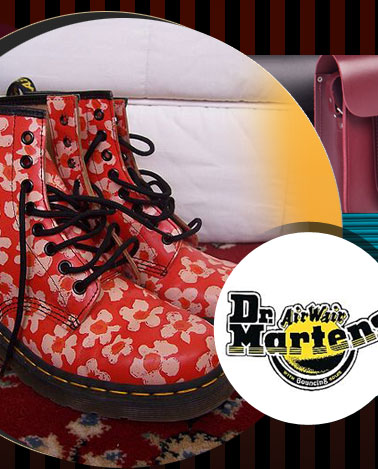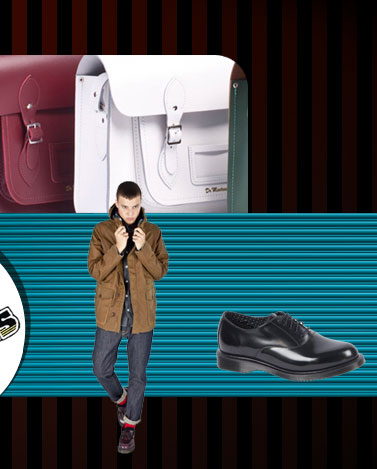Märtens did not have much success selling his shoes until he met up with an old university friend, Dr. Herbert Funck, in Munich in 1947. Funck was intrigued by the new shoe design, and the two went into business that year inSeeshaupt, Germany, using discarded rubber from Luftwaffeairfields. The comfortable soles were a big hit with housewives, with 80% of sales in the first decade going to women over the age of 40.
Sales had grown so much by 1952 that they opened a factory in Munich. In 1959, the company had grown large enough that Märtens and Funck looked at marketing the footwear internationally. Almost immediately, British shoe manufacturer R. Griggs Group Ltd. bought patent rights to manufacture the shoes in the United Kingdom. Griggs anglicized the name, slightly re-shaped the heel to make them fit better, added the trademark yellow stitching, and trademarked the soles as AirWair.
1 April 1960 (known as style 1460 and still in production today) the first Dr. Martens boots in the United Kingdom came out on with an eight-eyelet Ox Blood Smooth leather design. Originally Dr. Martens were made in their Cobbs Lane factory (which is still working today). In addition, a number of shoe manufacturers in the Northamptonshire area also produced DM's under license, as long as they passed quality standards. They were popular among workers such as postmen, police officers and factory workers.
Early 1970s Skinheads started wearing them
Late 1980s They were popular among scooter riders, punks, some New Wave musicians, and members of other youth subcultures. The shoes' popularity among skinheads lead to the brand gaining an association with violence.
November 1994 A six story Dr Martens department store was opened in Covent Garden in London which sold food, belts and watches as well as shoes. At this time the R. Griggs company employed 2,700 people, expected to earn annual revenue of £170 million and could produce up to 10 million pairs of shoes per year.
1998 to 2003 Dr. Martens sponsored Rushden & Diamonds F.C.and when a new main stand was built at Nene Park in 2001, it was named the Airwair Stand. In the 2000s (decade), Dr. Martens were sold exclusively under the AirWair name, and came in dozens of different styles, including conventional black shoes, sandals and steel-toed boots.
In 2003 The Dr. Martens company came close to bankruptcy. On 1 April that year, under pressure from declining sales, the company ceased making shoes in the United Kingdom, and moved all production to China and Thailand. Five factories and two shops were closed in the UK as a result of this decision, and more than 1000 of the firm's employees lost their jobs. Following the closures, the R. Griggs company employed only 20 people in the UK, all of whom were located in the firm's head office.
In 2004 Dr. Martens began producing some footwear again in England, in the Cobbs Lane Factory in Wollaston. These products are part of the "Vintage" line, which the company advertises as being made to the original specs Sales of these shoes are low in comparison to those made in Asia, however; in 2010 the factory was producing about 50 pairs each day
In 2005 The R. Griggs company was given an award by the "Institute for Turnaround" for implementing a successful restructure.
Early 2010 Worldwide sales of Dr. Martens shoes grew strongly
 In 2012 It was assessed as being the eighth fastest-growing British company. As of 2010, over 100 million pairs of Dr. Martens shoes had been sold since 1960, and the company was offering 250 different models of footwear. The R. Griggs company opened 14 new Dr. Martens retail stores in the United Kingdom, United States and Hong Kong between 2009 and 2011 and also launched a line of clothing during 2011. In 2012 It was assessed as being the eighth fastest-growing British company. As of 2010, over 100 million pairs of Dr. Martens shoes had been sold since 1960, and the company was offering 250 different models of footwear. The R. Griggs company opened 14 new Dr. Martens retail stores in the United Kingdom, United States and Hong Kong between 2009 and 2011 and also launched a line of clothing during 2011.
A Dr. Martens retail store in Hong Kong (2012)
|

